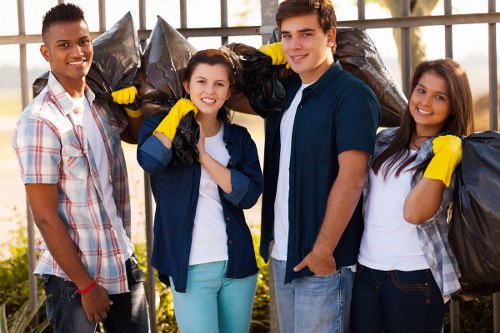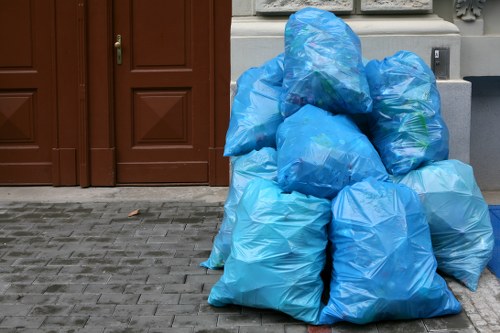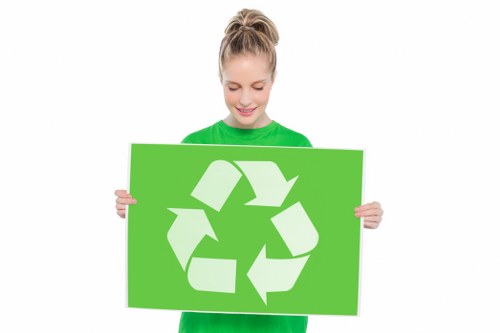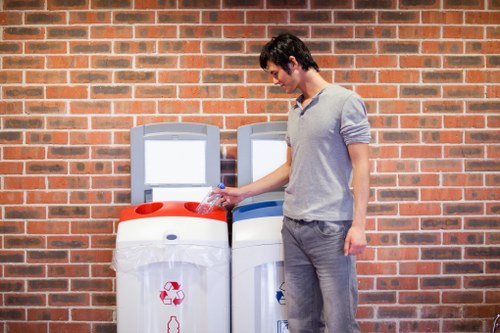Waste Clearance in White Goods Recycle

Understanding White Goods Recycling
White goods, which include large household appliances like refrigerators, washing machines, and dishwashers, play a significant role in our daily lives. However, disposing of these items responsibly is crucial for environmental sustainability. Waste clearance in white goods recycle ensures that these appliances are processed in an eco-friendly manner, minimizing their impact on the environment.
Recycling white goods involves several steps, from collection to processing, each designed to recover valuable materials and reduce waste. By participating in recycling programs, consumers contribute to conserving natural resources and reducing greenhouse gas emissions.
Moreover, proper waste clearance helps in managing hazardous materials often found in white goods, such as refrigerants and heavy metals, preventing them from contaminating soil and water sources.

The Importance of Recycling White Goods
Recycling white goods is essential for several reasons:
- Environmental Protection: Prevents harmful substances in appliances from polluting the environment.
- Resource Conservation: Recovers valuable materials like metals and plastics, reducing the need for virgin resources.
- Energy Savings: Recycling materials typically consumes less energy compared to producing new ones.
- Economic Benefits: Creates jobs in the recycling and manufacturing sectors.
By understanding these benefits, individuals and businesses can make informed decisions about waste management and contribute to a more sustainable future.
Implementing effective waste clearance systems for white goods also aligns with global efforts to reduce waste and promote circular economy principles.

Steps Involved in White Goods Recycling
1. Collection and Transportation
The first step in recycling white goods is the collection and transportation of used appliances. This process involves:
- Scheduling Pickup: Coordinating with recycling centers for appliance collection.
- Transportation: Safely moving the appliances to recycling facilities.
- Initial Inspection: Assessing the condition of the appliances for suitability in recycling.
2. Dismantling and Sorting
Once at the recycling facility, appliances are dismantled to separate different materials:
- Metal Recovery: Extracting steel, aluminum, and other metals.
- Plastic Sorting: Separating various types of plastics for recycling.
- Glass Handling: Managing glass components, especially from microwave ovens.
This meticulous sorting process ensures that each material is properly recycled and reused.

Environmental Benefits of Recycling White Goods
Recycling white goods has numerous environmental benefits:
- Reduction in Landfill Waste: Decreases the volume of waste sent to landfills.
- Energy Conservation: Saves energy by reusing materials in manufacturing.
- Lower Carbon Footprint: Reduces greenhouse gas emissions associated with production and disposal.
- Resource Efficiency: Maximizes the use of existing materials, decreasing the demand for new resources.
These benefits collectively contribute to a healthier planet and a more sustainable ecosystem.
Additionally, recycling helps mitigate the effects of resource depletion, ensuring that future generations have access to essential materials.

Challenges in White Goods Recycling
1. Complex Dismantling Processes
White goods often contain complex components and hazardous materials, making the dismantling process challenging. Proper training and equipment are essential to handle these appliances safely and efficiently.
2. Market Fluctuations for Recycled Materials
The demand and prices for recycled materials can be volatile, affecting the profitability of recycling operations. Ensuring stable markets is crucial for the sustainability of recycling programs.
3. Consumer Awareness and Participation
Educating consumers about the importance of recycling and encouraging participation is vital. Lack of awareness can result in lower recycling rates and increased environmental impact.
Overcoming these challenges requires coordinated efforts between governments, businesses, and communities to create effective recycling systems.
Investing in research and development can also lead to more efficient recycling technologies, addressing some of these obstacles.

Best Practices for Effective Waste Clearance
To ensure efficient waste clearance in white goods recycling, consider the following best practices:
- Proper Separation: Sort appliances by type and material before recycling.
- Certified Recycling Facilities: Use facilities that adhere to environmental standards and regulations.
- Regular Collection Services: Schedule regular pickups to manage waste effectively.
- Community Education: Raise awareness about the benefits and processes of recycling.
Implementing these practices can enhance the effectiveness of recycling programs and contribute to environmental conservation.
Moreover, collaboration between stakeholders can lead to innovative solutions for waste management challenges.

The Role of Legislation in White Goods Recycling
Government policies and regulations play a crucial role in promoting white goods recycling:
- Extended Producer Responsibility (EPR): Requires manufacturers to take responsibility for the end-of-life management of their products.
- Recycling Mandates: Sets targets for recycling rates and material recovery.
- Subsidies and Incentives: Encourages businesses and consumers to engage in recycling activities.
These legislative measures help create a framework that supports sustainable recycling practices.
Compliance with regulations ensures that recycling processes meet environmental standards and contribute to overall sustainability goals.

Innovations in White Goods Recycling
Technological advancements are driving innovations in white goods recycling:
- Automated Sorting Systems: Utilize AI and machine learning to improve the accuracy and efficiency of material sorting.
- Advanced Recycling Techniques: Develop methods to recover more materials and reduce waste.
- Circular Economy Models: Foster systems where materials are reused and recycled continuously.
These innovations enhance the effectiveness of recycling programs and make the process more sustainable.
Investing in research and development can lead to breakthroughs that further minimize the environmental impact of white goods disposal.

Conclusion
Waste clearance in white goods recycle is an essential component of sustainable waste management. By understanding the processes, benefits, and challenges associated with recycling white goods, individuals and businesses can make informed decisions that positively impact the environment.
Implementing best practices, adhering to regulations, and embracing technological innovations are key to enhancing the effectiveness of recycling programs. Ultimately, collective efforts towards efficient waste clearance contribute to a healthier planet and a more sustainable future.
Ready to make a difference? Contact us today to learn more about our white goods recycling services and take a step towards environmental responsibility.
Book your service now and join the movement towards a greener tomorrow.